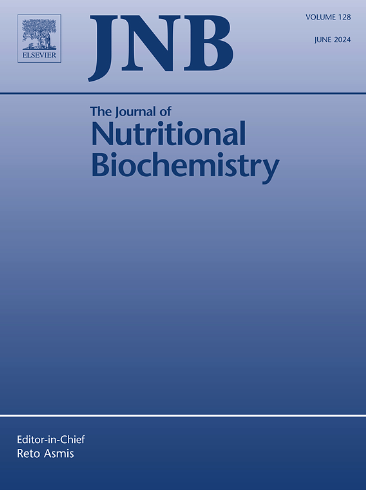Sulforaphanin ameliorates the damage of the Cyprinus carpio liver induced by Aeromonas hydrophila via activating AMPK pathway
IF 4.9
2区 医学
Q1 BIOCHEMISTRY & MOLECULAR BIOLOGY
引用次数: 0
Abstract
This study aims to explore how the sulforaphane (SFN) exerts a mitigating effect on the liver injury of Cyprinus carpio (C. carpio) caused by Aeromonas hydrophila (A. hydrophila). A total of 450 C. carpio. (40.2 ± 2.8 g) were randomly assigned to five groups, each consisting of three replicates. The control group was not infected with A. hydrophila and was fed with the ordinary commercial feed. The other different groups were attacked by A. hydrophila and fed four sulforaphane-graded diets (0, 10, 15, and 20 mg/kg) for 8 weeks. The findings indicated that supplementation SFN (15 and 20 mg/kg) could recover or even significantly reduce the levels of tumor necrosis factor-α (TNF-α) ,interleukin-1β (IL-1β) and IL-6 and increased the level of IL-10 in the liver by repressing the NF-κB signaling pathway compared to the only A. hydrophila-infection group (P < .05). Also, SFN supplementation increased the immunoglobulin M (IgM) level, complement 3 (C3) and C4 concentrations in comparison with the only A. hydrophila-infection group in the liver of C. carpio to enhance the immune function (P < .05). After that, transcriptome through KEGG enrichment analysis suggested that differentially expressed genes (DEGs) were associated with immunological diseases, as well as fat digestion and absorption pathways. Notably, these pathways include antigen processing and presentation, as well as the AMP-activated protein kinase (AMPK) and peroxisome proliferator-activated receptor (PPAR) signaling pathways. In conclusion, it was determined that C. carpio fed with suitable amount (15 mg/kg) of SFN improved lipid deposition caused by A. hydrophila via regulating the lipid metabolism pathway.

萝卜硫素通过激活AMPK通路改善嗜水气单胞菌对鲤肝的损伤。
本研究旨在探讨萝卜硫素(SFN)对嗜水气单胞菌(a . hydrophila)引起的鲤肝损伤的缓解作用。共450株C. carpio。体重为40.2±2.8 g,随机分为5组,每组3个重复。对照组不感染嗜水单胞菌,饲喂普通商品饲料。其余各组分别饲喂4种萝卜硫素分级饲粮(0、10、15和20 mg/kg),饲喂8周。结果表明,与单纯嗜水单胞杆菌感染组相比,添加SFN(15和20 mg/kg)可通过抑制NF-κB信号通路恢复甚至显著降低肝脏肿瘤坏死因子-α (TNF-α)、白细胞介素-1β (IL-1β)和IL-6水平,提高肝脏IL-10水平(P < 0.05)。与单纯嗜水单胞杆菌感染组相比,添加SFN可提高鲫鱼肝脏免疫球蛋白M (IgM)水平、补体3 (C3)和C4浓度,增强鲫鱼免疫功能(P < 0.05)。之后,转录组通过KEGG富集分析表明,差异表达基因(DEGs)与免疫性疾病以及脂肪消化和吸收途径有关。值得注意的是,这些途径包括抗原加工和递呈,以及amp激活的蛋白激酶(AMPK)和过氧化物酶体增殖体激活受体(PPAR)信号通路。综上所述,饲料中添加适量(15 mg/kg)的SFN可通过调节脂质代谢途径改善鲤鱼脂质沉积。
本文章由计算机程序翻译,如有差异,请以英文原文为准。
求助全文
约1分钟内获得全文
求助全文
来源期刊

Journal of Nutritional Biochemistry
医学-生化与分子生物学
CiteScore
9.50
自引率
3.60%
发文量
237
审稿时长
68 days
期刊介绍:
Devoted to advancements in nutritional sciences, The Journal of Nutritional Biochemistry presents experimental nutrition research as it relates to: biochemistry, molecular biology, toxicology, or physiology.
Rigorous reviews by an international editorial board of distinguished scientists ensure publication of the most current and key research being conducted in nutrition at the cellular, animal and human level. In addition to its monthly features of critical reviews and research articles, The Journal of Nutritional Biochemistry also periodically publishes emerging issues, experimental methods, and other types of articles.
 求助内容:
求助内容: 应助结果提醒方式:
应助结果提醒方式:


